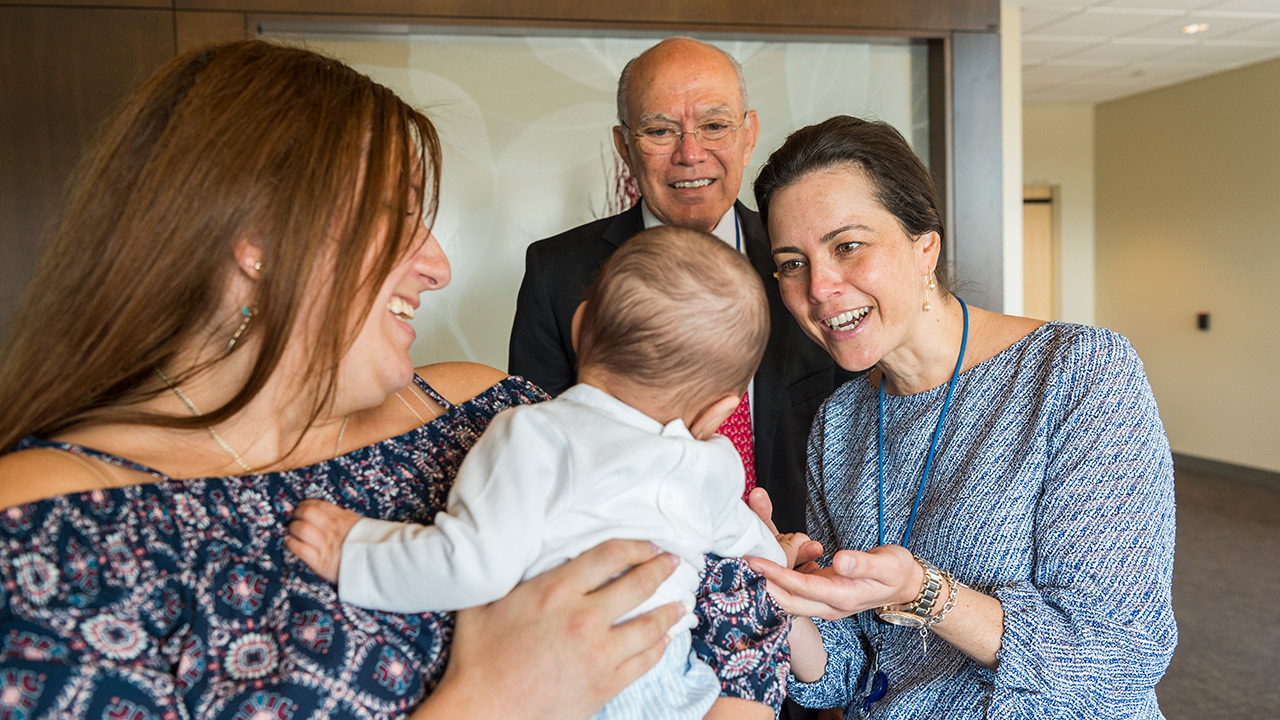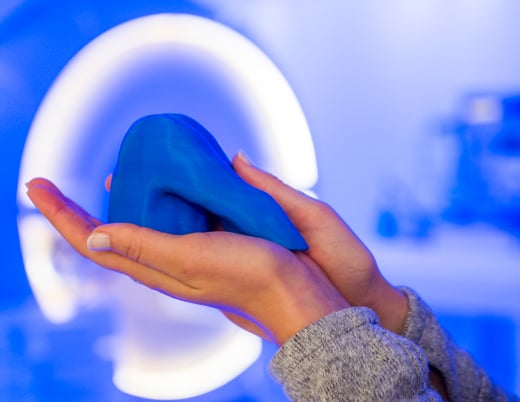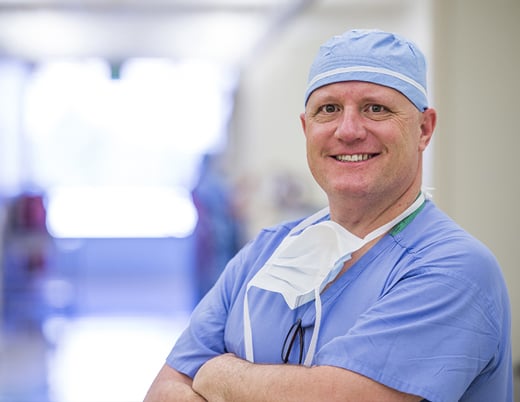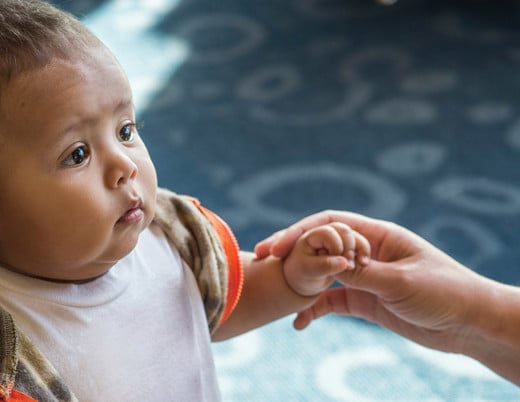On a gray New Jersey morning in November 1987, Yva Sibilia was wondering where her baby was. She delivered overnight. She named the baby Linda. Then they'd taken Linda and hadn't brought her back.
Her husband, John, hadn't come yet, and since she'd moved to New Jersey from Peru just a couple of years prior, her English wasn't great. Someone finally told her Linda needed an operation and would need to go to a different hospital. Would Yva sign the papers?
"I said, 'I'll sign whatever you want — just let me see my baby,'" Yva recalls.
By the time John came, Yva and Linda were across town. Linda was undergoing surgery, and Yva was recovering from delivery, frightened, alone and confused. Another doctor told her he wanted to bring in yet another doctor from yet another hospital. This doctor's name was Alberto Peña, MD, and he was an expert on these sorts of things.
"I said, 'He speak Spanish? Yes, bring him in.'" Yva laughs. "My English was so bad."
"The first thing I told them was, 'Don't do any more surgeries,'" says Dr. Peña.
One chance to get surgery right
Dr. Peña had been treating conditions like Linda's — malformations of the anus, rectum and genitourinary tract — since the 1970s. In those days, surgeons operated via the abdomen, essentially working blind. Functional prognoses were grim: no fecal or urinary control, no sexual function. The operations saved lives, but they destroyed babies' chances of living normally.
In 1980, Dr. Peña invented a better way to do it: the posterior sagittal anorectoplasty. Better known as the "Peña pull-through," the method involved lying the patient belly-down and essentially splitting the buttocks down the middle. In 1982, he adapted the procedure for female-specific conditions like cloaca, in which the rectum, vagina and urethra form a common channel, which opens into a single orifice at the normal location of the urethra. That's what Linda had.
To correct it, Dr. Peña would separate the three structures and pull the rectum and vagina into place. He then reconstructed what used to be the common channel as the new urethra. Linda had a long common channel — 3.5 centimeters — which meant a worse prognosis. But if all went well, there was hope.
"We can restore anatomy, but we can't always restore function," says pediatric surgeon Andrea Bischoff, MD, Co-Director of the International Center for Colorectal and Urogenital Care at Children's Hospital Colorado. "We have one chance to get it right."
Treating colorectal malformations from day one
Twenty-eight years later, at Children's Colorado, Drs. Peña and Bischoff diagnosed Rhonda Bohlen's daughter Ariana* with posterior cloaca before she was even born.
"It's very difficult to learn that a child will be born with an anomaly," says Dr. Bischoff. "We like to make the prenatal diagnosis, because it allows us time to explain to the parents everything that's going on, and what will most likely happen after birth. That way, parents can enjoy the birth of their child instead of being so scared and overwhelmed. It also offers them the possibility of delivering in a specialized center."
In Ariana's case, the team at the Colorado Fetal Care Center would need to act sooner. Ariana's urethra was also almost completely blocked, which was causing her urine to back up and her belly to swell. Left untreated, the distension would stunt the development of her lungs.
The fetal care team placed a shunt, a one-way "pigtail" valve to drain off the fluid. It worked, but Rhonda's water broke a few days later — meaning it wouldn't be safe for her to return home to Farmington, New Mexico. So she stayed on in the Maternal Fetal Care Unit, waiting for Ariana to grow. Ten weeks went by.
A complicated time, a complex condition
Rhonda took advantage of the time. She chatted with Ariana's future care team: Drs. Peña and Bischoff; pediatric nephrologist Margret Bock, MD; pediatric urologist Duncan Wilcox, MD; pediatric and adolescent gynecologist Veronica Alaniz, MD; among others. She asked a lot of questions.
"It was a complicated time." Rhonda laughs. "I missed my husband and my other kids, but the doctors and nurses really became like a family. I think anybody can have a job, but it takes special people to put their whole heart into it. And I feel like they all did."
"I cried when I finally left," she adds.
A month after Ariana was born — relatively healthy at 32 weeks — Drs. Peña and Bischoff performed a scope to get a better idea of the particulars of her anomaly. They successfully reconstructed her urogenital tract two months after that. Dr. Alaniz sat in on both procedures.
Lifelong gynecology care for urogenital differences
Because urogenital malformations have wide-ranging reproductive implications, it helps Dr. Alaniz to get a sense of the anatomy now. But her real work won't start for another decade.
"I really get involved around puberty, when they start exploring their sexuality," she says. "I'm someone they've known from childhood, who knows their situation, who they can feel comfortable sharing private, intimate details with. That's important. If they have a problem and feel like they have nobody to talk to, they might just avoid intimacy altogether."
She'll potentially be Ariana's doctor for life. As Ariana grows, she can transition to adult care at the University of Colorado Hospital next door. Both Dr. Alaniz and Dr. Bischoff have practices there.
"We want to be their everything," says Dr. Bischoff. "For potty training, for the start of menstruation, the start of sexual function. We want to assist with fertility if they need it. We want to be there for delivery. It's a full cycle."
Accessing care for colorectal malformations in the far reaches of the world
Fernanda Lage, MD, is the only pediatric surgeon in the state of Acre, Brazil. Bordering Bolivia and Peru on Brazil's far western frontier, it is, by American standards, unimaginably remote.
"For 12 years I've been working alone out here in the jungle," says Dr. Lage. "I like to say it's just me and God."
Dealing with prevalent malnutrition, incest and lack of prenatal care, Dr. Lage sees a lot of anorectal malformations for her sparse population — about 10 or 15 a year. She'll manage 100% of their care.
"I am their doctor," she says. "I will care for them all my life."
She learned it from Dr. Peña.
The Peña Course
Since 1985, Dr. Peña and his team have hosted courses on anorectal reconstructions — with live surgical demonstrations — a few times a year. They've done 62 of them in the U.S., and another 120 around the world, on five continents.
Dr. Lage went to one in 2006, the year she finished her pediatric surgery fellowship, in Rio de Janeiro. She went again in 2013. In 2017, she attended the course at Children's Colorado.
"I hope to go more times," she says. "Every time I learn something new."
This year, she learned better laxative management for kids having trouble with soiling — which almost all of Dr. Lage's patients were. She'd tried managing diet before, but found that it hadn't been effective for her patients. After this year's course, she's upped her patients' laxative dose. Most of her patients have stopped having accidents.
That's a very real short-term gain. In the long term, after listening to presentations from Drs. Wilcox and Alaniz, Dr. Lage realized she needed to recruit.
"I see how much value they give to their team," she says. "Here, I am the pediatric surgeon, the radiologist, the gynecologist, the nurse — I am everyone. So now I am trying to make a team, because I have learned from them how important that is."
A crisis of public health for children with colorectal malformations
Recently Dr. Lage asked the Public Health Department of Brazil for two dedicated nurses — she's been promised at least one so far. As a professor in the medical school at the Federal University of Acre, she's also trying to involve her students.
It's not easy. In Brazil, pediatric specialties aren't highly valued. Pediatric-specific tools are scarce, and pediatric hospitals are few and far between. Dr. Lage is a popular instructor who consistently wins student-favorite awards, but of the 400 or so students she's worked with over the years, exactly three have gone into pediatric surgery.
"To me this is a crisis of public health," she says. "It's really hard. Dr. Peña and Dr. Bischoff have taught me a lot, but they also give me the courage to keep going."
The crisis is not unique to Brazil. Every day, kids born with treatable colorectal malformations get bad reconstructions and, in an instant, lose their chance to live normally, to find intimacy, to have children of their own.
"It happens even in the United States," says Dr. Bischoff.
In one far-flung corner of the Amazon rainforest, kids are getting that chance.
The next generation
Linda is not Dr. Peña's first patient to give birth, but her case is the most complex so far. With her long common channel, plus double vaginas and uteri (she carried the baby in her left uterus), a successful pregnancy was far from guaranteed. Benjamin's was complicated — preeclampsia necessitated a cesarean section at seven months — but he's healthy.
It's not an outcome Dr. Peña could have predicted 30 years ago.
"In those days, I never thought about that," he says. "I never dreamed I would be sitting here in Denver with the next generation."
Lifetime support for cloacal anomaly
And yet, Dr. Peña sowed the seeds that would bring him and Linda to that very room. Performing Linda's surgery cleanly and correctly was only the first step. He made himself open. He stayed in touch.
He has photos of birthdays, weddings, graduations. He followed Linda as she learned swimming, ballet, taekwondo. She went to the Junior Olympics. And when she had health problems — which children with congenital anomalies often do — he was there, too. John used to carry around his card.
"I'd say, 'Before you do anything, you gotta call him,'" he says.
His counsel, in part, kept Linda healthy over the years, and perhaps it was in part his compassion that gave her the confidence to pursue what she wanted, from athletics to relationships.
"When I was dating," she says, "I'd be like, 'So these are my issues, and you can decide if you want to continue or go on your way. If you don't accept it, the door's there.'"
Dr. Peña laughs. "We are always so impressed by our patients with these devastating malformations, how strong and optimistic they can be," he says. "Traditionally, surgeons operate and then send the patient back to the pediatrician. I believe they miss something very important. I have pictures of Linda as she was growing, and now you are here, and I get to meet your son. You made our day."
John leans forward, telegraphing a look of utter sincerity. "You made our life."
* Names and details have been changed to protect patient privacy.
Featured Researchers
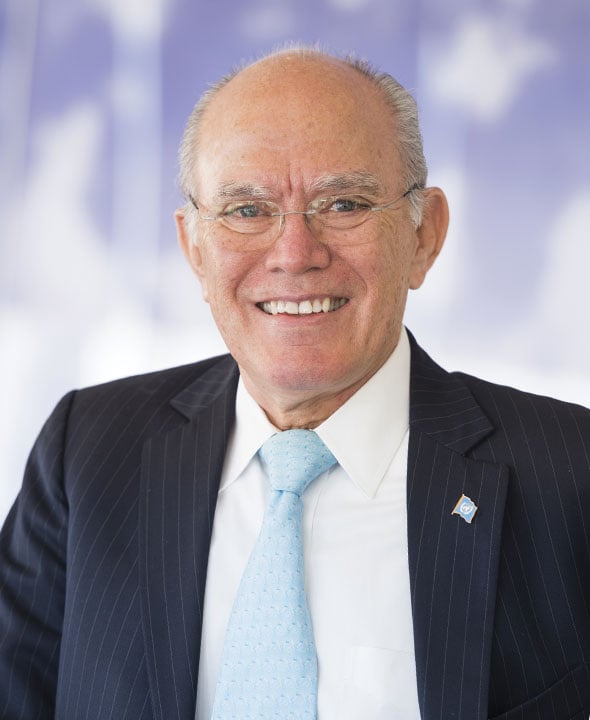
Alberto Peña, MD
Founding Director
International Center for Colorectal and Urogenital Care
Children's Hospital Colorado
Professor emeritus
Surgery
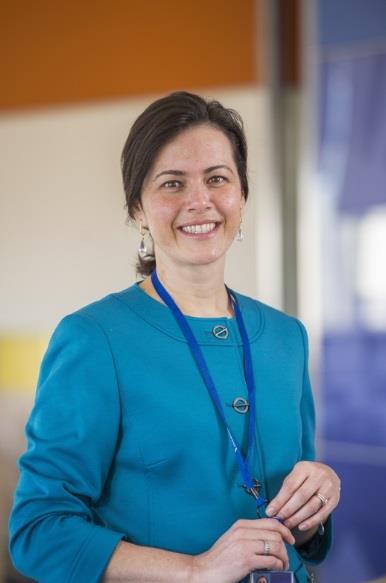
Andrea Bischoff, MD
Pediatric surgeon
International Center for Colorectal and Urogenital Care
Children's Hospital Colorado
Professor
Surgery-Peds Surgery
University of Colorado School of Medicine
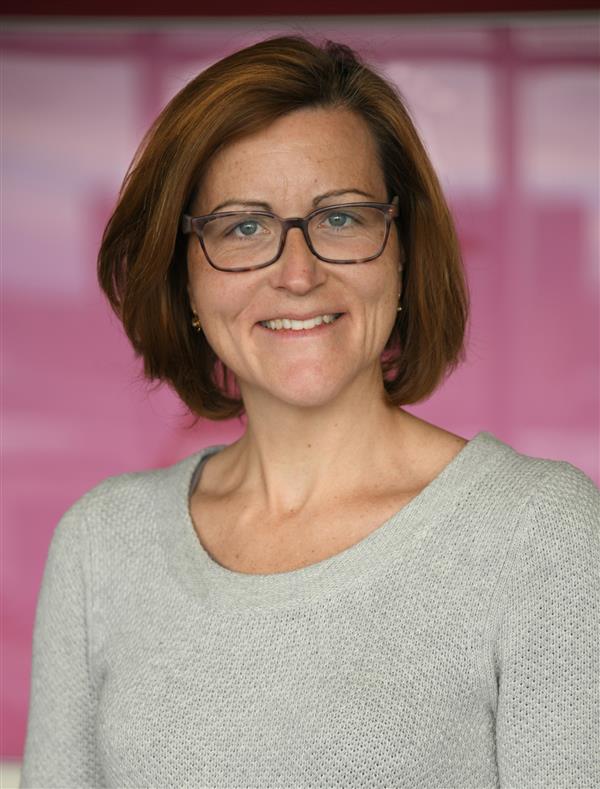
Margret Bock, MD
Pediatric nephrologist
Pediatric Nephrology
Children's Hospital Colorado
Associate professor
Pediatrics-Nephrology
University of Colorado School of Medicine
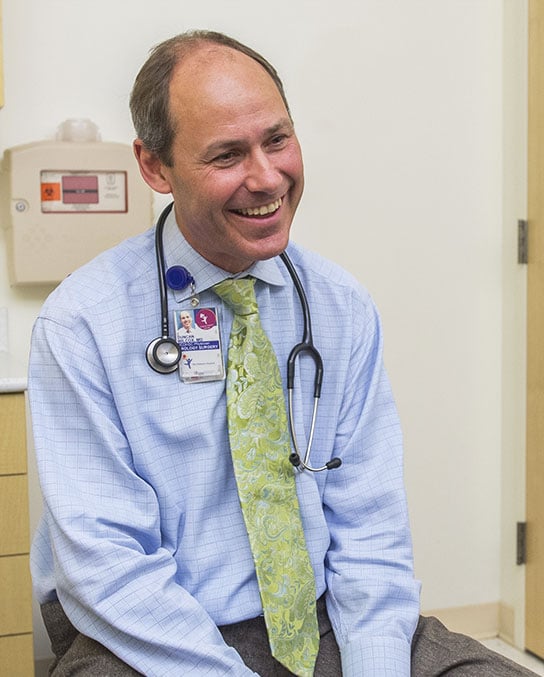
Duncan Wilcox, MD
Surgeon-in-Chief
Pediatric Urology
Children's Hospital Colorado
Professor
Surgery-Urology
University of Colorado School of Medicine
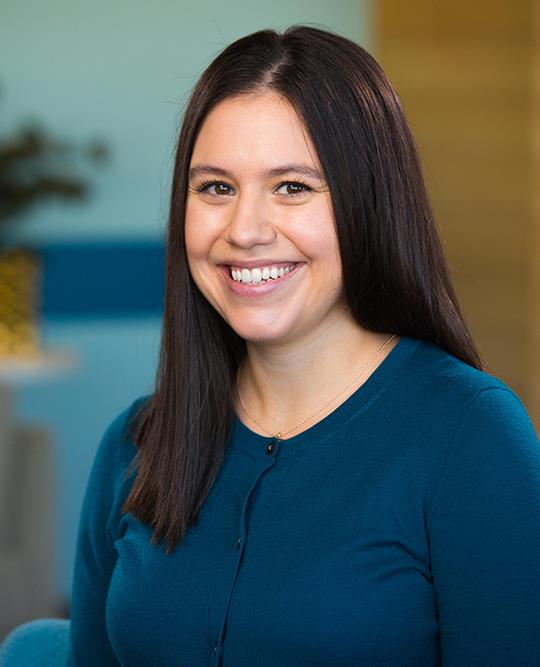
Veronica Alaniz, MD, MPH
Pediatric and adolescent gynecologist
Pediatric and Adolescent Gynecology
Children's Hospital Colorado
Associate professor
OB-GYN-Gyn and OB Health
University of Colorado School of Medicine





 720-777-0123
720-777-0123







